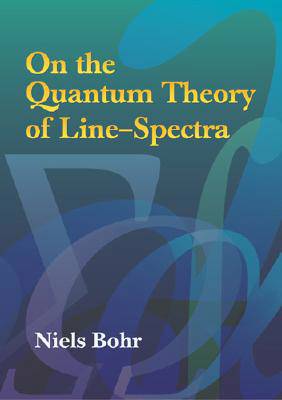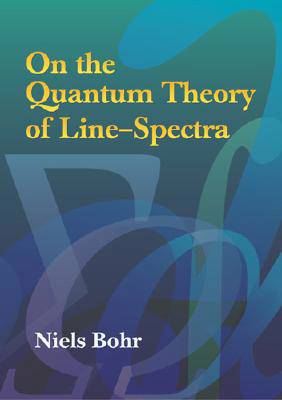
- Afhalen na 1 uur in een winkel met voorraad
- Gratis thuislevering in België vanaf € 30
- Ruim aanbod met 7 miljoen producten
- Afhalen na 1 uur in een winkel met voorraad
- Gratis thuislevering in België vanaf € 30
- Ruim aanbod met 7 miljoen producten
Zoeken
€ 13,95
+ 27 punten
Omschrijving
This classic three-part work by Niels Bohr elaborates on the correspondence principle, a concept first introduced by the Nobel Laureate in 1913. In this series of papers published between 1918 and 1922, Bohr discusses the theory's applications from a uniform point of view and considers the underlying assumptions in their relations to ordinary mechanics and electrodynamics. He elucidates the outstanding difficulties, tracing the analogy between quantum theory and ordinary theory of radiation as closely as possible.
The first part briefly discusses the theory's general principles and deals with the application of the general theory to periodic systems of one degree of freedom and to a certain class of non-periodic systems. The second features a detailed discussion of the theory of the hydrogen spectrum that illustrates general consideration. The third and final part contains a discussion of the questions arising in connection with the explanation of the spectra of other elements.
The first part briefly discusses the theory's general principles and deals with the application of the general theory to periodic systems of one degree of freedom and to a certain class of non-periodic systems. The second features a detailed discussion of the theory of the hydrogen spectrum that illustrates general consideration. The third and final part contains a discussion of the questions arising in connection with the explanation of the spectra of other elements.
Specificaties
Betrokkenen
- Auteur(s):
- Uitgeverij:
Inhoud
- Aantal bladzijden:
- 128
- Taal:
- Engels
- Reeks:
Eigenschappen
- Productcode (EAN):
- 9780486442488
- Verschijningsdatum:
- 16/03/2005
- Uitvoering:
- Paperback
- Formaat:
- Trade paperback (VS)
- Afmetingen:
- 166 mm x 233 mm
- Gewicht:
- 181 g

Alleen bij Standaard Boekhandel
+ 27 punten op je klantenkaart van Standaard Boekhandel
Beoordelingen
We publiceren alleen reviews die voldoen aan de voorwaarden voor reviews. Bekijk onze voorwaarden voor reviews.











